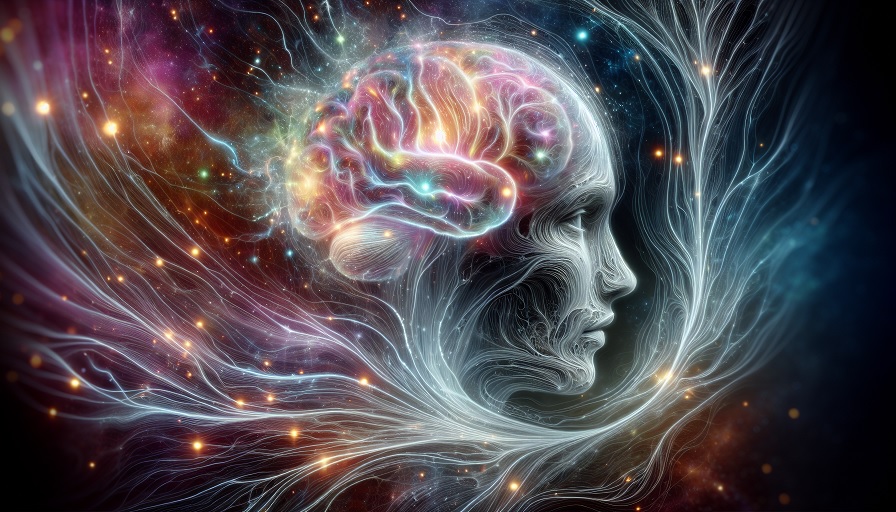
Imagine reading a book and seeing each word shimmer in a unique hue, or hearing a piano note and instantly tasting a hint of strawberry. For some individuals, this is not fantasy but daily reality. This fascinating phenomenon is called synesthesia, a condition in which the senses intertwine to create multi-layered perceptions. Thinking in colors is one of the most common forms, but it is only the tip of the sensory iceberg. Understanding the synesthetic mind offers more than an odd curiosity; it provides clues into how our brains process information, enhance creativity, and perhaps even boost memory.
Contents
What Is Synesthesia?
Synesthesia occurs when stimulation of one sensory pathway triggers automatic and involuntary experiences in another. In other words, the brain processes inputs in a way that blends senses together. For someone with grapheme-color synesthesia, letters and numbers might appear tinged with specific colors. For others, musical notes may conjure vivid visual patterns or even tactile sensations. These experiences are consistent for each person: if the letter “A” appears red to a synesthete, it will always appear red.
The exact cause is still under study, but research suggests that increased connectivity between sensory regions in the brain plays a key role. In most people, these areas communicate in a more compartmentalized fashion, but in synesthetes, the boundaries are more permeable. This allows signals from one sense to activate another, producing experiences that feel as natural as sight or hearing alone.
Interestingly, synesthesia is not considered a disorder. Many who have it view it as a gift, enriching their perception of the world. It can enhance creativity, help with memory recall, and create deeply personal associations that make learning more enjoyable. Famous synesthetes include musicians like Pharrell Williams, who associates chords with colors, and artists like Wassily Kandinsky, whose paintings reflected his cross-sensory experiences.
Types of Synesthesia
While thinking in colors gets the most attention, there are many varieties of synesthesia. These include:
- Grapheme-color synesthesia: Letters, numbers, or words evoke specific colors.
- Chromesthesia: Sounds trigger the visualization of colors or shapes.
- Lexical-gustatory synesthesia: Words cause distinct taste sensations.
- Mirror-touch synesthesia: Seeing someone being touched triggers a tactile sensation on the observer’s own body.
- Number-form synesthesia: Numbers are visualized as spatial maps in the mind.
Each type reflects a different sensory pathway connection, but the core principle remains the same: the senses are cross-wired in a way that blends their outputs into a single integrated experience.
The Brain Science Behind Thinking in Colors
Modern brain imaging has shed light on the neural roots of synesthesia. Studies using functional MRI (fMRI) have found that when synesthetes experience a trigger, brain regions that process the associated sensory modality become active, even without direct stimulation. For example, when a grapheme-color synesthete reads black text, their visual color-processing area (V4) lights up, as though they were actually seeing color.
Some scientists believe this occurs because of an abundance of neural connections formed during early brain development. In most people, excess connections are pruned away to streamline processing, but in synesthetes, some of these remain. This might create the “cross-talk” between senses. Genetics also play a role, as synesthesia often runs in families.
Beyond the anatomy, there is a functional advantage to this setup. The brain’s ability to integrate information from different senses can create stronger memory associations. For example, if the number “5” is always forest green in your mind, recalling that shade may help you remember numerical information more effectively.
Synesthesia and Creativity
Artists, writers, and musicians with synesthesia often say it enriches their creative process. A melody might not just be a sound but a visual journey through gradients of color. Writers might feel that certain words carry a taste or texture, guiding their choice of vocabulary. These sensory bridges can help generate unique, layered works of art that resonate on multiple levels with audiences.
Historically, many groundbreaking artists have credited synesthesia with shaping their work. Kandinsky claimed he could “hear” colors and “see” sounds, which influenced his abstract compositions. Composer Olivier Messiaen described chords as “stained glass windows” in sound, and his music reflected these visual harmonies.
While synesthesia itself cannot be learned in its purest form, anyone can benefit from cross-sensory exercises that strengthen creative thinking. For example, pairing music with specific colors during brainstorming sessions can help spark new associations and innovative ideas.
Nootropics, Brain Supplements, and Sensory Processing
Although synesthesia is largely an inborn trait, the clarity and richness of mental associations depend on overall brain health. Cognitive function relies on efficient communication between neurons, which in turn is influenced by factors like nutrition, sleep quality, and mental stimulation. Some people turn to nootropics and brain supplements to support focus, memory, and mental agility. While these cannot induce true synesthesia, supporting neural health may enhance general sensory processing and creative thinking. Ingredients that promote blood flow to the brain, protect neurons from oxidative stress, or support neurotransmitter balance can help the mind operate at its full potential, allowing you to make richer associations between concepts and sensations.
Training the Brain to Think More Vividly
You may not be able to spontaneously taste the word “Wednesday” or see the number 8 as sky blue, but you can strengthen the connections between your senses. Here are a few techniques:
- Cross-sensory journaling: Describe what a song “looks” like or what a painting might “taste” like, even if the associations are imagined.
- Mind-mapping with colors: Assign colors to concepts when organizing ideas to create visual anchors for memory.
- Multi-sensory learning: Pair vocabulary words with textures, scents, or sounds to reinforce recall.
- Musical association: Connect melodies to moods or imagery when studying or brainstorming.
These practices do not produce true synesthesia, but they can mimic some of its benefits by encouraging the brain to integrate sensory information in more dynamic ways.
The Gift and the Mystery
Synesthesia remains one of the most captivating mysteries in neuroscience. It reminds us that perception is not a fixed reality but a personal experience shaped by the brain’s unique wiring. For those who live with it, thinking in colors is more than just a quirk – it is a window into a richer, more interconnected world. For the rest of us, the synesthetic mind offers inspiration to nurture creativity, strengthen sensory connections, and care for our brain’s health so it can perform at its most vivid.

